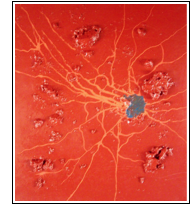Enseigner au futur
 Fidèle à soi-même, c’est fidèle à son futur, non à son passé. (Georges Perros)
Fidèle à soi-même, c’est fidèle à son futur, non à son passé. (Georges Perros)
Le Québec a fait le pari éducationnel d’être moderne. Sa situation géoéconomique ne lui laisse guère le choix. Les premières indications laissent entendre qu’il a pris la bonne voie. Pour l’instant, les élèves canadiens, et notamment les élèves québécois, tirent bien leur épingle du jeu sur le plan international (La Presse : Les Québécois, des «bollés»). Mais il importe de préciser que les élèves de 15 ans évalués par PISA (2006) n’étaient pas alors plongés dans la réforme. De toute façon, les tests standardisés à l’échelle internationale n’évaluent que certains apprentissages; par ailleurs, les résultats varient en fonction de la concordance avec les programmes de formation locaux.
Celui qui débute dans la profession aujourd’hui et qui s’imagine reproduire durant 35 ans le modèle actuel se met un doigt dans l’oeil. Les parents issus de la i-génération, pour ne nommer que ceux-là, ne toléreront pas très longtemps les méthodes uniformes et conformistes. Le mécontentement ne fera que s’amplifier maintenant que le milieu du travail se plaint de la formation scolaire (est-il besoin de rappeler que nos systèmes d’éducation sont étroitement liés au moteur économique).
Et si ce n’est les parents, les élèves vont miner les écoles de leurs nouvelles technologies. Déjà, en moins de deux ans, j’ai assisté à l’abandon de la vidéocassette au profit du numérique, au remplacement des CD par les clés USB, au délaissement de la bibliothèque pour Internet, et, bientôt, l’omniprésence des cellulaires.
Tôt ou tard, les jeunes arrivent à la triste réalisation que l’école actuelle les prépare mal pour l’avenir qu’ils entrevoient. C’est l’une des caractéristiques d’Internet que l’information n’est plus canalisée en fonction des catégories d’âge, des publics cibles, ou des conventions ; surtout, elle n’est pas compartimentée de force dans des disciplines scolaires. De plus, les usagers filtrent eux-mêmes l’information en fonction de leurs réseaux sociaux (au pluriel). L’école n’a plus le choix d’évoluer vers la pertinence. Quand le climat change, il faut adapter les techniques de jardinage.
Dans le contexte d’une éducation qui tend à l’individualisation, à l’autonomie, à la collaboration et à l’utilisation des nouvelles technologies, le rôle de l’enseignant est appelé à se transformer. Au fur et à mesure que l’élève se développe, et particulièrement à compter de l’adolescence, le professeur va assumer les fonctions de conseiller et de régulateur des apprentissages. La fonction de conseiller pédagogique va se rapprocher de l’apprenant. Les élèves ne seront plus dépendants des professeurs pour construire leurs connaissances; toutefois, ils voudront d’un architecte pour harmoniser l’édifice.
Il ne se passe pas une journée sans que les médias n’annoncent le raz-de-marée. Malheureusement, les nouvelles nous proviennent de l’extérieur, comme si le Québec voulait réformer l’éducation à l’écart de la révolution technologique. Voici celles qui ont retenu mon attention ces derniers temps :
Non pas réformer, mais remplacer le système d’éducation. Edutopia : Future School: Reshaping Learning from the Ground Up (une entrevue fascinante avec Alvin Toffler)
New technologies make possible customization in a way that the old system — everybody reading the same textbook at the same time — did not offer.
L’ordinateur en tant qu’outil d’évaluation, fournisseur de ressources et conseiller en orientation. F. David Peat : Richard Worzel (Toronto Futurist) The Next 100 Years in Education (source : Ze Cool blogue)
Possessing so much information about the student, each student’s computer will be able to guide her, find those things that interest her most, and find the best ways of presenting them to her. From this experience, her computer tutor will gradually discern those subjects that are of greatest interest to her, and begin to guide her towards her best career by integrating her interests with what the marketplace needs.
- The Indianapolis Star : Early alerts should help shape education
Kids arrive at school at all different levels of readiness, so this monitoring to check on improvement most educators think is really important.
Les universités adaptent leurs cours pour le secondaire. eSchool News : MIT adapts free online courses for high school (source : Ze Cool blogue)
Highlights for High School features more than 2,600 video and audio clips, animations, lecture notes, and assignments taken from actual MIT courses. The site organizes these resources to match the Advanced Placement physics, biology, and calculus curricula. Demonstrations, simulations, and animations give educators engaging ways to present STEM concepts, while videos illustrate MIT’s hands-on approach to the teaching of these subjects.
La vidéo s’impose. eSchool News : Video sites make science more accessible (voir SciVee et UChannel)
Some experts say the biggest advantage to science videos is making research more accessible to students and nonscientists. There’s no guarantee that video can’t be manipulated, but the medium also might force scientists to think twice before committing fraud.
MIT’s online offerings, published under an open licence that encourages reuse, redistribution and modification for noncommercial purposes, include lecture notes, exams and lecture videos from more than 1,800 courses, virtually all of its curriculum.
- New York Times : What Did the Professor Say? Check Your iPod
At least two companies now sell software to universities and other institutions that captures the words of classroom lectures and syncs them with the digital images used during the talk usually PowerPoint slides and animations. The illustrated lectures are stored on a server so that students can retrieve them and replay the content on the bus ride home, clicking along to the exact section they need to review.
- eSchool News : ‘Coursecasting’ now a higher-education staple
« Since we launched the [podcasting] offering in 2006, we saw 2 million downloads of our podcasts in the first year alone from our iTunes U channel. We have had 650,000 views in the first two weeks of our YouTube channel launch. Interest in our content has exploded, » said Adam Hochman, project manager for Berkeley’s Education Technology Services department.
La mixité des méthodes d’enseignement. Wikipedia : Blended learning
Blended Learning is the combination of multiple approaches to learning. Blended learning can be accomplished through the use of ‘blended’ virtual and physical resources.
Accéder plus tôt à l’université. Université de Moncton : Faislesaut.com : Directement du secondaire à l’université
Tu as ton diplôme de secondaire 5? Inscris-toi à l’Université de Moncton! Tu es au Cégep? Il ya possibilité de créditer certains cours, informe-toi dès maintenant.
Les élèves s’organisent. Beyond School : Students 2.0 Edublog Pre-Launch: Help Spread the Splash
I have watched this handful of impressive young adults from around the world working tirelessly for the last three weeks on an endless Skype chat to prepare the launch of the new Students 2.0 edublog. And I’ve been amazed at how much more they know than any adult I know about many things technical and pedagogical.
Les écoles passent au sans-fil. Red Orbit : Project brings wireless Internet to city classrooms
The new technology, already available in some schools, will allow schools to educate children in new and different ways.
Les communautés prennent la relève des écoles. Globe and Mail : A tech-savvy ‘jump start’ for at-risk youth
If the centre were not there, crime in the area would be increasing. When you have a place that welcomes you, and gives you knowledge, it is helping you.
Les forces du changement social transformeront l’école. elearnspace : Keynote presentation: Ohio State Extension (voir aussi le diaporama : Pressures of Change: A Response)
Transformation and innovation need to occur at all levels: course design, delivery, policies, funding, and the organization of the institution itself. We can only tweak at a course level for so long before we have to conceptualize an entirely new system.
La fusion et l’intégration des principaux services Internet. The Fishbowl : 2020 Vision (source : Ze Cool blogue)
The goal is not to debate the plausibility of any specific predictions, but to envision a time in the not-too-distant future when the world is significantly different – and hopefully schools are as well.
Les communications entre professeurs et élèves se mondialisent. The Star-Ledger : With new technology, N.J. students reach peers abroad
Bringing together students from two different continents and many backgrounds is a new high-tech videoconference technology gaining popularity at schools across New Jersey.
Les meilleurs professeurs ont un auditoire qui déborde de la classe. New York Times : At 71, Physics Professor Is a Web Star
Walter H. G. Lewin, 71, a physics professor, has long had a cult following at M.I.T. And he has now emerged as an international Internet guru, thanks to the global classroom the institute created to spread knowledge through cyberspace.
La numérisation des manuels. USA Today : Log in, enter password, read a textbook
« We’re definitely seeing a lot of success. The demand in California was three times what we expected it to be. »
La naturalisation de l’électronique. eSchool News : High-tech gadgets top kids’ holiday lists
Owing in part to a phenomenon known as ‘age compression,’ technology is replacing traditional toys for ever-younger children.
L’apprentissage personnalisé. Holistic and integral education : Doing IT Differently – B: Personalised Learning
In 2008 all students who are doing a Computing subject at HC will develop a Personal Learning Plan where they will map out the learning, teaching and assessment they require for their chosen pathway.
La prolifération du e-learning. eSchool News : State offers free online high school courses
Beginning this month, high school students in Connecticut can enroll in free online courses through a pilot program called the Connecticut Virtual Learning Center.
L’apprentissage à distance des langues étrangères. New America Media : High-Tech Delivers Chinese Teachers to the World
Chinese language teachers in Beijing don’t need to apply for work visas to teach in the United States anymore. From an office in west Beijing they can teach their mother tongue through the Internet language school eChineseLearning to Americans and students in 41 other countries.
(Image thématique : Future Construction, par JimmyErnst)
Par ricochet :
Conférence en ligne sur l’avenir de l’éducation
7 principes pour éduquer la i-génération
Futurologie et apprentissage
Les facteurs de l’avenir de l’éducation
Vous pouvez suivre les commentaires en réponse à ce billet avec le RSS 2.0 Vous pouvez laisser une réponse, ou trackback.









Merci pour cette recension. je sens vraiment que 2008 est celle où les intervenants et les systèmes vont vraiment s’y arrêter et y penser sérieusement. On approchge une masse critique, une sorte de tipping point, comme le dit Papert. Ce n’est plus seulement l’affaire de quelques-uns, des zélés, des early-adopters, des futuristes, marginaux quoi. « The times they are a changin’ », chantait Dylan.
Au sein de Apprendre 2.0, je réfléchissais à cette évolution possible « de apprendre 2.0 vers Apprendre ad’hoc »
http://apprendre2point0.ning.com/forum/topic/show?id=945551%3ATopic%3A7981
bonjour,
je continue à suivre votre très bon blog, bien que je ne soit pas dans l’enseignement.
Je voulais vous partager un article qui peut vous intéresser – alors je le fais en commentaire car je ne sais pas comment vous contacter:
http://en.wikipedia.org/wiki/Pedagogical_patterns
J’espère que vous avez recu et commencer à lire le livre que je vous avait conseillé (made to stick)
cordialement
Bonjour François et bravo pour ton passage à Maisonneuve hier. Je te soumets ce lien vers un cours donné au Collège de France intitulé : Pourquoi et comment le monde devient numérique. http://www.ecrans.fr/Pourquoi-et-comment-le-monde,3009.html
Bonne lecture et réflexion.
En tant qu’enseignant, je constate que les changements que vous décrivez sont bel et bien en cours. Toute activité d’apprentissage qui prend comme prémisse de base que l’enseignant est le seul et unique transmetteur de connaissances m’appraît vouée à l’échec. Mes élèves recourent à mon savoir, certes, mais c’est davantage pour s’aider à s’y retrouver dans l’abondance de connaissances qui leur tombent dessus que pour recevoir des tonnes de nouvelles connaissances.
M. Guité, merci beaucoup d’avoir pris le temps de nous donner autant de ressources pour poursuivre notre réflexion sur nos pratiques pédagogiques…